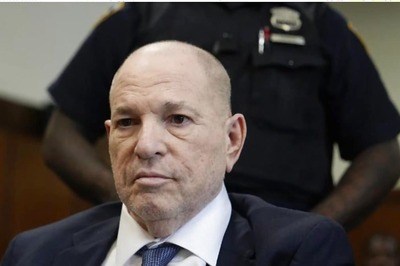
views
Mumbai seems set for a lung transplant procedure, but activists, environmentalists and disgruntled residents are not breathing easy. For months, a metro rail project in the city has been in the eye of a storm after authorities announced they would hack about 2,700 trees in the Aarey forest to clear space. Following a wave of protests, officials said they would transplant more trees from the city’s green lung than earlier proposed, apart from promising aggressive afforestation elsewhere.
“There are total 3,691 trees in Metro-3 depot land. We will retain 1,045 trees. As per Tree Authority approval 461 trees are to be transplanted and 2,185 are to be cut. Six times more trees means 13110 trees to be newly planted. Please join us in planting them,” Ashwini Bhide, chief of Mumbai Metro Rail Corporation (MMRC), tweeted on September 8.
Transplantation is a process to relocate trees. However, the assurances have failed to pacify protesters, and with good reason, they say. When members of the tree authority from the Municipal Corporation of Greater Mumbai, also known as Brihanmumbai Municipal Corporation (BMC), inspected the proposed site of the metro car shed in August, they expressed dissatisfaction at the transplantation efforts in the adjoining block. The officials observed that only 284 of the 400 saplings planted by MMRC had survived. And this less-than-successful effort is just the tip of the iceberg. It has been revealed that 48 per cent of the trees transplanted by MMRC since January 2018 have died. Experts say the relocation of mature trees requires adequate planning, engineering techniques as well as resources. The metro rail agency had transplanted a total of 5,443 trees, of which 2,644 have shown no signs of sprouting. However, the tree authority gave its nod to the felling late last month.
The BMC gave a go-ahead for the clearing of the land while asserting that the proposed metro rail project will substantially bring down the number of vehicles on Mumbai roads, leading to a drop in CO2 emission levels, which will also compensate for the loss of tree cover. However, this has failed to convince critics. Shiv Sena leader Aaditya Thackeray, whose party governs the BMC, has also joined the campaign against the deforestation.
Not just preservation of green cover, the fight for the Aarey forest is also a fight for the flora and fauna within it, say activists. A Mumbai-based NGO has written to the central government and the International Union for Conservation of Nature, among others, providing proof of the presence of leopards on the patch of land and the threat to their habitat if these trees are cut down.
Mumbai is not the only city where transplantation drives have sometimes been ineffective. In 2007, the Bangalore Environment Trust (BET) transplanted 10 fully-grown trees from the MG Road Metro Station site to the ground behind it. Only three survived and the rest died, mostly due to lack of adequate care. BET then took up the transplantation of 30 Neem trees and also inspected them until they sent out new shoots. This effort bore fruit as all the trees except one survived.
Says Dr CR Babu of Delhi University’s School of Environmental Studies, “Not all trees can be transplanted; 15-17-year-old trees can be transplanted but a 100-year-old tree would never survive. Also, trees with very deep roots won’t survive if transplanted.”
When the Delhi government recently gave permission to cut 3,000 trees and transplant another 3,500 of them for extension of the Dwarka Expressway, a city-based NGO appealed to the National Green Tribunal. It alleged that the government gave its nod without assessing the survival chances of the transplanted trees. The matter will be next heard on November 6.
In February, the Delhi forest department had come up with a draft tree transplantation policy that aimed to relocate 80 per cent of the indigenous trees in any infrastructure project. Experts and activists criticised the proposal, citing the government’s own past experience at Pragati Maidan that showed only three per cent of the transplanted trees survived.
Environmentalist and journalist Rakesh Kalshian says, “China has successfully transplanted a large number of trees. It all depends on the size and age of trees; younger trees can be transplanted.” But, he maintains, there is much more to relocation of trees than meets the eye. “Transplantation undermines the ecology of any particular region. Uproot a few trees and you totally destabilise the ecosystem of that place. The soil of every area is different as is the micro-climate of that place. Just as a young person can shift to a different place and acclimatise more easily compared to an older person, similarly a younger tree can be transplanted with more ease compared to an older tree. Trees are not standalone objects; they have feelings and emotions connected to other trees around them; it is cruel to uproot a tree and transplant it elsewhere.”




















Comments
0 comment